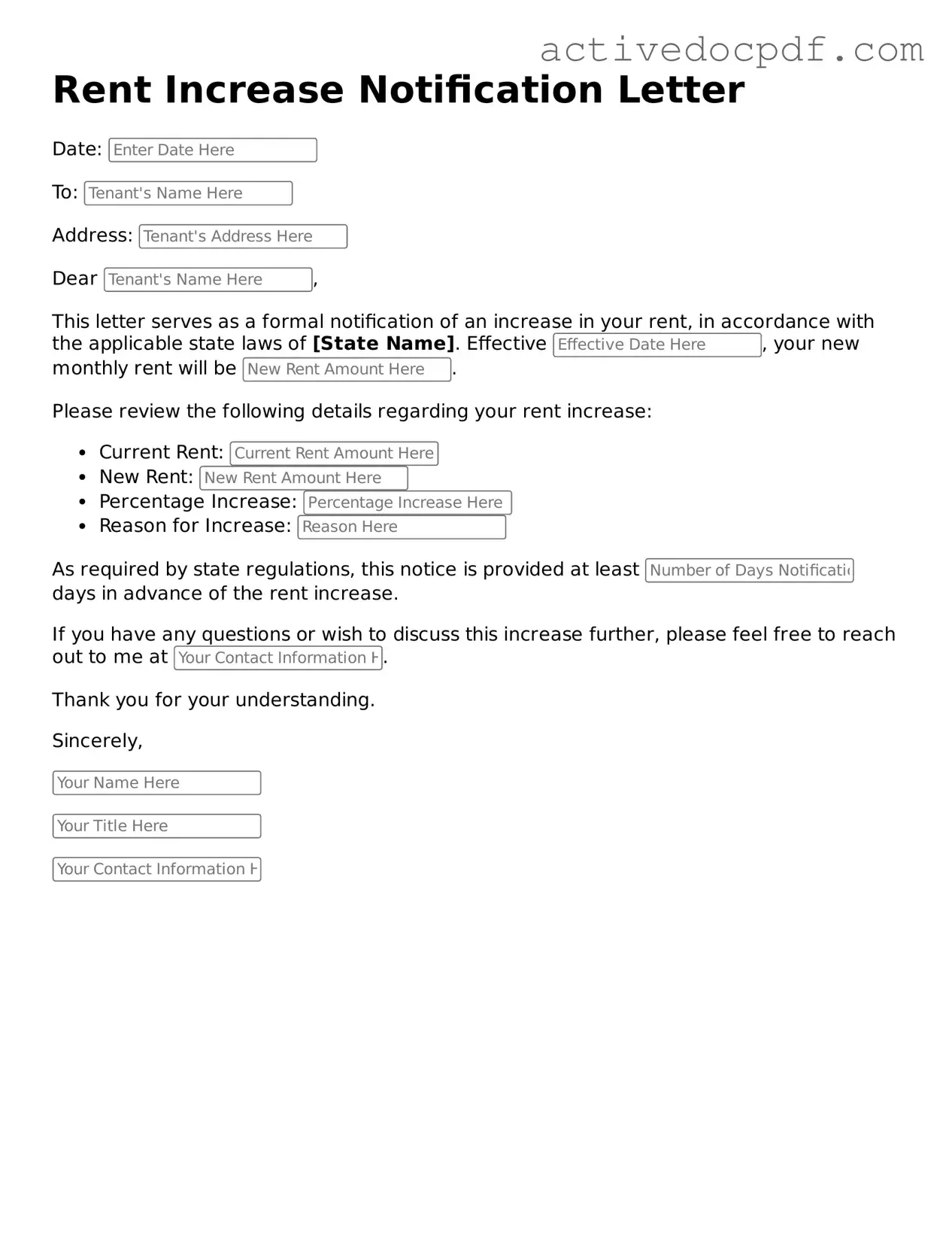What is a Rent Increase Letter?
A Rent Increase Letter is a formal notification from a landlord to a tenant informing them of an upcoming increase in rent. This letter outlines the new rental amount, the effective date of the increase, and any relevant details regarding the change.
Why do landlords need to send a Rent Increase Letter?
Landlords are required to provide written notice to tenants when increasing rent. This ensures transparency and gives tenants time to adjust their budgets or consider their housing options. A Rent Increase Letter serves as a legal record of the notice provided.
How much notice must be given for a rent increase?
The notice period for a rent increase varies by state. Generally, landlords must provide at least 30 days' notice for month-to-month leases, but some states may require longer notice. It is essential to check local laws to ensure compliance.
A Rent Increase Letter should include:
-
The current rental amount
-
The new rental amount
-
The effective date of the increase
-
The reason for the increase (optional)
-
Contact information for the landlord
Can a tenant dispute a rent increase?
Yes, tenants may dispute a rent increase if they believe it is unjustified or not in accordance with local laws. They should review their lease agreement and local regulations, and consider discussing the matter directly with the landlord.
What should a tenant do upon receiving a Rent Increase Letter?
Upon receiving a Rent Increase Letter, a tenant should:
-
Review the letter for accuracy and details.
-
Check local laws regarding rent increases.
-
Consider their options, including negotiating with the landlord or preparing to move.
Is there a limit to how much rent can be increased?
Some states and cities have rent control laws that limit how much rent can be increased within a certain time frame. Landlords must adhere to these regulations. It is important for both landlords and tenants to be aware of any applicable limits.
Can a Rent Increase Letter be sent via email?
While a Rent Increase Letter can be sent via email, it is advisable to send a physical copy as well. This ensures that there is a formal record of the notice and provides tenants with a tangible document to reference.
What happens if a tenant does not pay the increased rent?
If a tenant does not pay the increased rent, the landlord may follow the eviction process, depending on local laws. It is crucial for tenants to communicate with their landlord if they are facing financial difficulties.
Can landlords increase rent multiple times in a year?
Landlords can increase rent multiple times in a year, but they must adhere to local laws regarding notice periods and limits on increases. Tenants should be informed of any changes in a timely manner.
